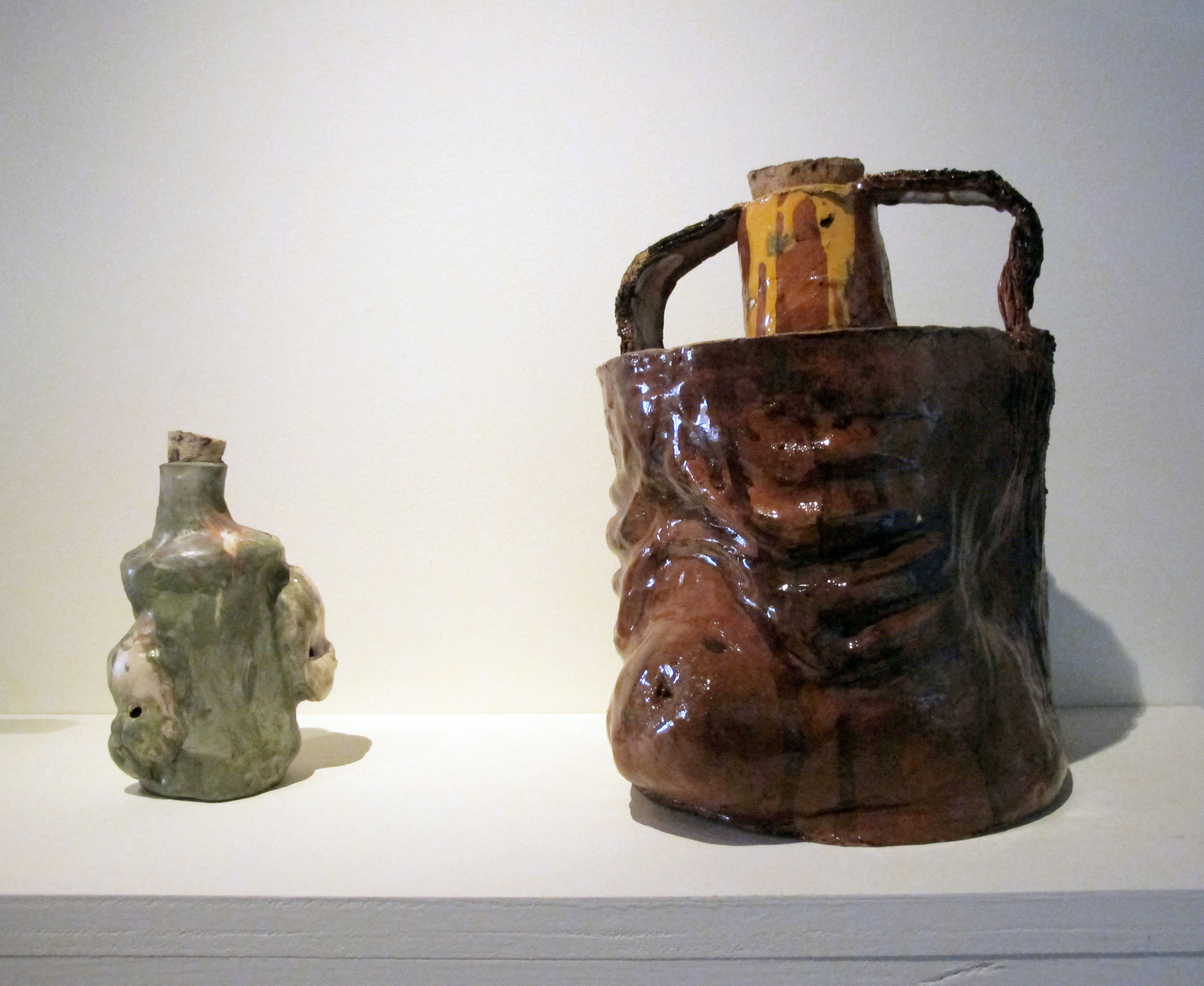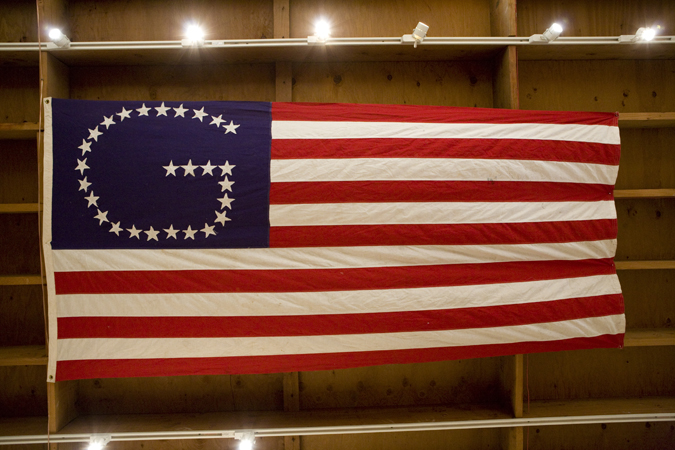How is this video installation different from a dramatic re-enactment or a PBS documentary? Though Lynch pays fanatical attention to historic detail, he also liberally interprets, using ceramics, fur covered masks, and performative iterations of leisure time in the old west. Hanging on the back wall of the gallery, Lynch paints what could be a scene from the film, entitled, “The Boone of the Sierras,” in the style of a 19th century American genre painting. The actors, though young for their roles, play their parts convincingly. Lynch, through his in-depth knowledge of the time period, and prophetic vision, constructs a complex visual poetry that ponders the costs of white settlement.
It’s not necessary to watch the whole film or follow the narrative to engage with the performative rituals which are at the center of “The Murder of Hi Good.” A major portion of the film is devoted to a celebratory sequence of Hi Good and Ned participating in the secret rites of what seems to be a covert meeting of Freemasons. Throughout, characters become deeply involved in tantalizing spectacles. Performance artist Marnie Weber plays the role of a mystic girl conjuring spirits. Through Ned’s eyes you percieve how far the white settlers have wandered from their own notions of virtue; they have become lost in their own invented rituals, a residual effect of a strong belief in Manifest Destiny. The scene ends with a rhythmic song emanating from three Mill Creek native women, who have been taken hostage.
Lee Lynch’s presentation of the Murder of Hi Good links historical research and narrative film to a contemporary art context, encouraging the viewer to participate in this visual and ritualistic re-recording of America. After lingering in the gallery for a time, I was desperate to look at a bibliography. I wanted to fact check, I wanted to dance, I wanted to use paint and ink to be a part of history in the making.
Be sure to attend the Conversation with Lee Lynch and Marnie Weber, taking place Thursday, October 6, 7:30PM at Steve Turner Contemporary.




 RSS
RSS
